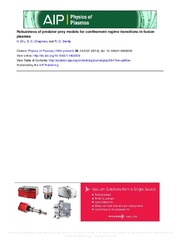Robust Reasoning for Autonomous Cyber-Physical Systems in Dynamic Environments
Permanent link
https://hdl.handle.net/10037/23564Date
2021Type
Journal articleTidsskriftartikkel
Peer reviewed
Author
Håkansson, Anne; Saad, Aya; Sadanandan Anand, Akhil; Gjærum, Vilde Benoni; Robinson, Haakon; Seel, KatrineAbstract
Autonomous cyber-physical systems, CPS, in dynamic environments must work impeccably. The cyber-physical systems must handle tasks consistently and trustworthily, i.e., with a robust behavior. Robust systems, in general, require making valid and solid decisions using one or a combination of robust reasoning strategies, algorithms, and robustness analysis. However, in dynamic environments, data can be incomplete, skewed, contradictory, and redundant impacting the reasoning. Basing decisions on these data can lead to inconsistent, irrational, and unreasonable cyber-physical systems' movements, adversely impacting the system’s reliability and integrity.
This paper presents the assessment of robust reasoning for autonomous cyber-physical systems in dynamic environments. In this work, robust reasoning is considered as 1) the capability of drawing conclusions with available data by applying classical and non-classical reasoning strategies and algorithms and 2) act and react robustly and safely in dynamic environments by employing robustness analysis to provide options on possible actions and evaluate alternative decisions. The result of the research shows that different common existing strategies, algorithms and analyses can be provided together with a comparison of their applicabilities, benefits, and drawbacks in the context of cyber-physical systems operating in dynamically changing environments. The conclusion is that robust reasoning in cyber-physical systems can handle dynamic environments. Moreover, combining these strategies and algorithms with robustness analysis can support achieving robust behavior in autonomous cyber-physical systems while operating in dynamically changing environments.
Publisher
ElsevierCitation
Håkansson A, Saad A, Sadanandan Anand A, Gjærum V, Robinson H, Seel K. Robust Reasoning for Autonomous Cyber-Physical Systems in Dynamic Environments. Procedia Computer Science. 2021;192:3966-3978Metadata
Show full item recordCollections
Copyright 2021 The Author(s)
Related items
Showing items related by title, author, creator and subject.
-
RAMARL: Robustness Analysis with Multi-Agent Reinforcement Learning - Robust Reasoning in Autonomous Cyber-Physical Systems
Saad, Aya; Håkansson, Anne (Journal article; Tidsskriftartikkel; Peer reviewed, 2022-10-19)A key driver to offering smart services is an infrastructure of Cyber-Physical systems (CPS)s. By definition, CPSs are intertwined physical and computational components that integrate physical behaviour with computation. The reason is to autonomously execute a task or a set of tasks providing a service or a list of end-users services. In real-life applications, CPSs operate in dynamically changing ... -
How robust are in situ observations for validating satellite-derived albedo over the dark zone of the Greenland Ice Sheet?
Ryan, J.C.; Hubbard, Alun Lloyd; Irvine-Fynn, T.; Doyle, S.H.; Cook, J.M.; Stibal, Marek; Box, J.E. (Journal article; Tidsskriftartikkel; Peer reviewed, 2017-07-17)Calibration and validation of satellite‐derived ice sheet albedo data require high‐quality, in situ measurements commonly acquired by up and down facing pyranometers mounted on automated weather stations (AWS). However, direct comparison between ground and satellite‐derived albedo can only be justified when the measured surface is homogeneous at the length‐scale of both satellite pixel and in situ ... -
Robustness of predator-prey models for confinement regime transitions in fusion plasmas
Zhu, H; Chapman, Sandra; Dendy, R.O. (Journal article; Tidsskriftartikkel; Peer reviewed, 2013)Energy transport and confinement in tokamak fusion plasmas is usually determined by the coupled nonlinear interactions of small-scale drift turbulence and larger scale coherent nonlinear structures, such as zonal flows, together with free energy sources such as temperature gradients. Zero-dimensional models, designed to embody plausible physical narratives for these interactions, can help to ...


 English
English norsk
norsk


